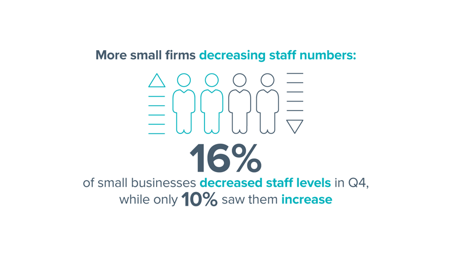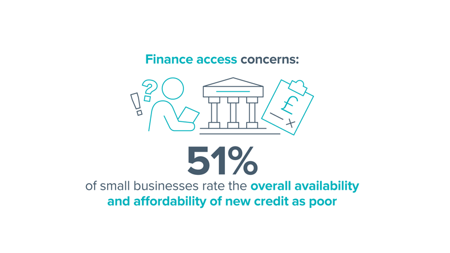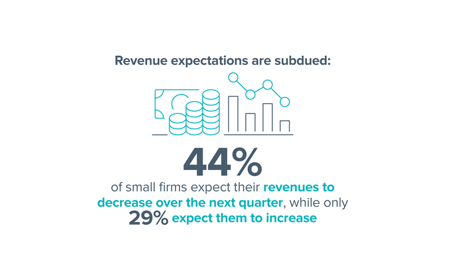Foreword
The latest headline Small Business Index confidence reading does not tell a happy story about the state of the UK’s 5.5 million-strong community of small businesses and self-employed people. Appropriately enough for the winter edition of our quarterly temperature check of small businesses, the -46 points measured is well into deep freeze territory, having fallen steadily from the relatively sunny outlook which small firms reported in the first quarter of 2022, the last time it was in positive territory.
The auguries for the Q4 report were far from promising, as – a week before the quarter began – the short-lived Truss administration unveiled the mini-Budget, which was not well-received by markets, to say the least, and which sparked economic turmoil which was only brought under control by swift action from the Bank of England, while a new Prime Minister and Chancellor took up their posts. Like everyone else, small firms felt the effects of this upheaval in different ways, from reduced consumer spending to higher rates on loans and mortgages.
There’s no denying the scale of the challenge that small firms are facing – the findings of this report speak for themselves in that regard. With persistently high energy prices (and with the end of the Energy Bill Relief Scheme looming at the end of March, to be replaced by the far less generous Energy Bill Discount Scheme), trouble finding staff with the right skills, and higher costs for just about every input you care to mention, small businesses are up against it to a degree not seen since the height of the pandemic.
This gloom can be found in all major sectors, and in every region and nation. Retail and hospitality are the least optimistic industries, a worrying finding when the last quarter of the year is one in which we’d usually hope to hear the sound of tills ringing amid festive cheer. Industrial action made it harder for some businesses to operate, especially retailers whose deliveries were delayed or cancelled due to postal strikes, while the low levels of consumer confidence registered in the final quarter underlined the fact that huge numbers of households are reining in their spending.
Revenue growth is another indicator which is flashing red on current performance, as well as sounding a warning about the coming quarter. Ten percent more small firms reported a fall in revenues over Q4 than enjoyed a rise, the third time in a row this has been the case, while the net balance looking ahead to Q1 2023 was -14%, a finding which sends a chill down the spine, as various economic institutions – from the IMF to the Bank of England – forecast that the UK economy will see at very best only anaemic growth this year, with a contraction also on the cards.
Interest rates have continued their upward climb, and small businesses’ credit confidence has taken another tumble, with our credit availability and affordability tracker falling to -29 points. The proportion of small firms now offered an interest rate of 11% or higher has quadrupled over the course of 2022, from 7% in Q1 to 28% in Q4, while two in five of those who applied for credit in Q4 were unsuccessful. Meanwhile, the cost rises which have prompted the Bank of England to hike rates repeatedly are showing little sign of easing, with the highest ever net balance of firms in the Small Business Index’s history – 86% – reporting operating costs greater than in the same quarter the previous year.
More small firms shed than took on staff in Q4, with a net balance of -6% reporting growth in employee numbers, although it is a notable – and hopeful – sign that the proportion expecting to expand their workforce in Q1 2023 barely outweighs those expecting to shrink, at 3% net balance. However, the share of small firms anticipating growth slipped between the third and fourth quarters, from 47% to 45%, yet another unwelcome harbinger of problems ahead.
Small businesses are resilient and astute, and skilled at adapting their operations to fit prevailing conditions with an eye to the future. But there is a limit to what they can cope with. They are looking now to the Budget in March, where the Government has an opportunity to set out an agenda for growth. We have come up with proposals to help small firms on issues ranging from late payment, to helping economically inactive people back into work, to promoting small businesses’ investment in R&D and their ability to reduce emissions, as well as mitigating the impact of the pre-profit taxes which deter risk-taking and entrepreneurship. With a less than encouraging sounding of small business sentiment in the final quarter, we are calling on the Government to take action and turn the economic forecast from wintry chill to something with more of a hint of spring to it.
Key statistics

[Image text] More small firms decreasing staff numbers: 16 % of small businesses decreased staff levels in Q4,
while only 10% saw them increase

[Image text] Finance access concerns: 51% of small businesses rate the overall availability
and affordability of new credit as poor

[Image text] Revenue expectations are subdued: 44% of small firms expect their revenues to
decrease over the next quarter, while only
29% expect them to increase
Key findings
- The Small Business Index (SBI) fell to -45.8 in Q4 2022. This marks a third consecutive quarterly fall, having stood at -35.9 in Q3, and the third consecutive quarter in which the Index has stood in negative territory.
- All UK regions saw a negative reading on the SBI in Q4. With the exception of London, all regions also saw their SBI reading worsen in Q4, relative to Q3.
- All major industries saw negative SBI readings in Q4 2022. Most major industries saw a worsening score in Q4 relative to Q3, with only manufacturing and construction witnessing improvement.
- The net balance of small businesses reporting revenue growth over Q4 2022 stood at -10.1%. This marked the third consecutive negative reading on this measure, with businesses experiencing difficult trading conditions.
- The net balance of small businesses reporting an increase in operating costs stood at 86.1% in Q4. This marks an increase from the net balance of 85.4% seen in Q3, and is the highest net balance figure on this measure since data collection began.
- Utilities represented the most commonly cited cause of changing costs amongst businesses in Q4, being the case for 61.3% of survey respondents. The percentage of respondents who attributed rising costs to taxation saw an increase from 17.0% to 23.1% in Q4. This is likely a reflection of the policy measures introduced by November’s Autumn Statement.
- A net balance of -6.1% of small businesses reported growth in employee numbers in Q4. This marked the worst reading on this measure since Q4 2020, when the UK economy was facing the second national lockdown.
- 44.7% of small businesses expect to grow over the coming year, down on the share of 47.4% expecting growth when asked in Q3. Weakening growth aspirations align with the general pessimism witnessed across the economy. Given the anticipated headwinds at the aggregate level, the ability of small businesses to grow is set to be tested over the coming year.
- The domestic economy is the most commonly cited potential barrier to growth amongst businesses that expect to expand over the coming year, being selected by 63.7% of respondents.
- Finding appropriately skilled staff overtook consumer demand as the second-most cited threat to growth aspirations, with 32.7% of respondents selecting this. Despite recessionary pressures, the labour market remains tight and firms are still facing difficulties in filling vacancies amidst labour shortages.
- Q4 2022 saw the third consecutive quarterly rise in the share of small businesses applying for credit. At 13.8%, this share rose to its highest level since Q1 2021.
- Given the changing monetary policy environment, there has been some upward pressure on the rates offered to small businesses recently when applying for credit. For instance, while the proportion of successful credit applications quoted an interest rate less than 5% fell to 38.1% in Q4, down from 41.4% in Q3, the share of applications being quoted a rate in excess of 11% rose to 28.2%, up from 20.2% previously.
Click below to download the full report






